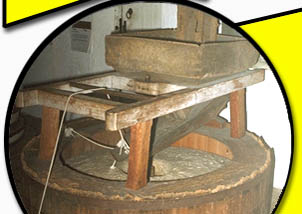








   |
  |
    |
The stones had to be dressed every three weeks. This meant turning over the grinding faces and sharpening the edges of the grooves. The grooves are called the furrows and the raised parts are called the lands. Mills like Sarehole would have enough stones to keep producing flour while one stone at a time was out of action being dressed.
By the end of the nineteenth century, stone grinding was giving way to roller grinding by massive, steam driven mills. This was done at the ports like Bristol and London where the corn was imported.